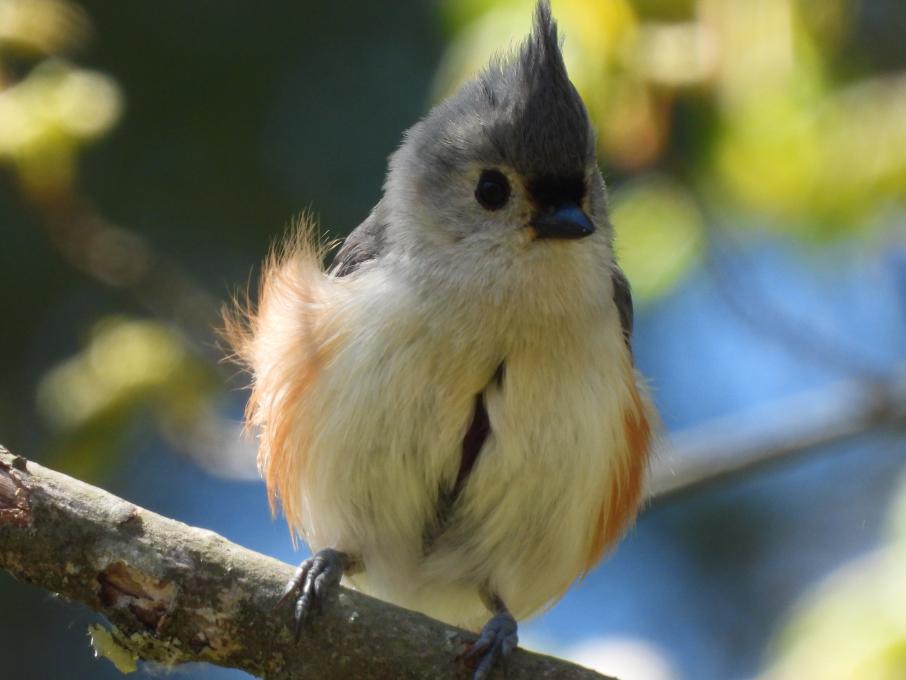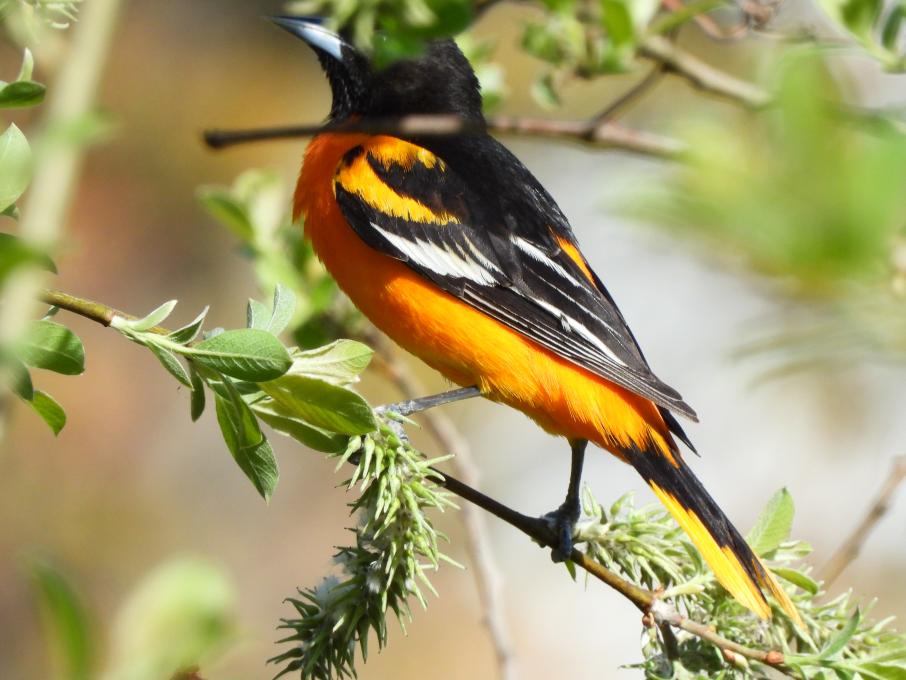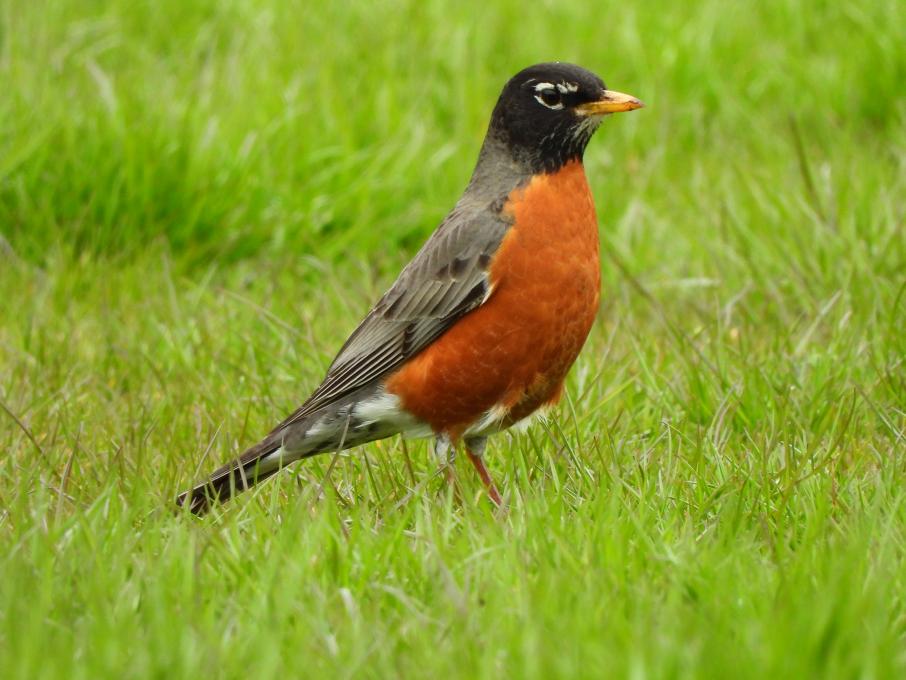Nicole
Forum Replies Created
Viewing 10 posts - 1 through 10 (of 10 total)
-
NicoleParticipantI have truly enjoyed this course and reading the posts from the community. Although I have always appreciated and respected the environment it has been only recently that I have really paid attention and tuned in to learning about birds and how they are essential on so many levels. I have also learned a great deal from watching birds at my own feeders and now that I am learning to photograph- I can and will sit for long periods of time just observing. Until spending some time at Audubon sites and reading I had no idea of the number of birds we have lost during my lifetime- it is staggering. I believe I follow most of the 7 simple actions but since I live in a condo I will be planting natives on my deck as to encourage and support the birds and pollinators. I have been conscious about the plastics I use and have reduced that a great deal just from using a reusable water bottle. I don't drink coffee but I will be sharing and urging others to be mindful of this issue. As I sit typing this a bird just bumped my window. However, I believe it is because the starlings (sometimes 8-10 of them) are fighting at the feeder and get carried away- not sure if there is a way to protect them from the glass. The two courses I have taken have fueled my interest and love of birding, photography and inspired me to become more involved with citizen science and open to learning more about birds, their environment and what our responsibility it to them. The courses have inspired me to use merlin and ebird and to get up early to seek out new birds and learn as much as I can about their migration and behaviors. I will continue to take courses, read, watch, observe, take pictures and become more involved in learning about how to protect birds and educate others about their essential role in our lives and our planets health.in reply to: Activities: Helping Birds in Your World #706698
-
NicoleParticipantActivity 2: My initial thought,before looking at numbers or recorded sightings would be that Mt. Lemmon would have a bigger variety and see more birds but after looking at both sites more carefully and getting an idea of their location and habitats it makes sense that the number and types of birds. I am guessing a lot of birds migrate through there or make it a pit-stop. It seems smaller birds, song birds are very common whereas at Mt. Lemmon there are larger birds, perhaps less migratory? What an amazing spot that must be- so much to see and it must be pretty condensed because the park is not that big.in reply to: Activities: Exploring Bird Habitats #705703
-
NicoleParticipantActivity 1 con't Rockefeller Preserve in Westchester County, NY is one of my favorite places to walk, especially around Swan Lake. Lots of different birds to see from those that make their home here most or all of the year Canada Geese to those that are passing through or just here for a short stay- Green Heron. There is so much wildlife to spot at this Park it never ceases to amaze and surprise. It is a welcoming spot, whether it be by or in the water or further into the woodlands or open fields- there is a place for so many species.


 in reply to: Activities: Exploring Bird Habitats #705694
in reply to: Activities: Exploring Bird Habitats #705694 -
NicoleParticipant1. Near my parents home in Putnam County, NY, which is a development about 10 years old in which the builder leveled all the trees before building and just now are the new trees and more natural areas coming back. One of the neighbors has a few bluebird boxes hung up and the bluebirds and tree swallows take advantage of them every year. In the same development another neighbor has a few feeders hung up that attract 10-20 American Goldfinches as well as other birds at one time. It is a sparse area, not much other wildlife, some deer, a rare squirrel but the birds seem to have made their way back and found comfortable spots to feed and nest. Turkey vultures and a few hawks routinely fly over head. Canada Geese, Robins, finches, sparrow, swallows and bluebirds are common.


 in reply to: Activities: Exploring Bird Habitats #705690
in reply to: Activities: Exploring Bird Habitats #705690 -
NicoleParticipant1. I have been taking pictures and then spending some time in Merlin and ebird learning a bit about them, when they are seen in my area and their migration patterns, their calls/songs as well as what the males vs. females look like in different seasons. I have a difficult time with their sounds, although there are one or two common ones I now know right away- doves, red winged black-birds, red bellied woodpecker. I have also been pointing out birds and identifying them to friends and family IRL or thru pictures whether they are interested or not :-) Really enjoyed looking at what others here have been doing to capture field notes- very creative. 2. I just started to get involved with the local Audubon (Bedford, NY) group and they are offering wonderful zoom sessions- I chance to learn more about birds, their behaviors and habitats. Some of the ways they are doing this is that their naturalist is taking the members (via zoom) with him as he goes bird watching.in reply to: Activities: Keeping Track of Your Birdwatching #703272
-
NicoleParticipantAmerican Red-start?

 Great Blue Heron in reply to: Activities: Different Seasons, Different Birds #702874
Great Blue Heron in reply to: Activities: Different Seasons, Different Birds #702874 -
NicoleParticipant1. It is really very interesting to see the migration paths and patterns that each bird takes. The northern cardinal, as a whole stays in the same regions (cover a good part of north America) pretty much throughout the entire year whereas the western blackburnian warbler covers a huge territory range from south America to Canada but resides in a small territory during non-migration season. The scarlet tanager’s territory range is much smaller when it in the southern regions but expands quite a bit when it goes north and becomes more plentiful. Whereas, the western tanager really stays to the west, closer to the coast only. A small percentage of the ruby hummingbirds remain in Florida throught the year, the others head northeast (North America). While the Rufous stays by the west coast only, whether its south for the winter or up north during the summer. The sandhill crane’s population stays condensed in the winter months; some stay in Florida but during the summer their “home turf” is quite vast. And the yellow-bellied flycatcher is also much more condensed in the winter in Central America and heads north skipping the southeast US but on its trip back south does spend time there. 2. Year round I see mallards, mourning doves and red-bellied woodpeckers (Westchester, NY). Whereas some of our part-time visitors are the Green Heron which I saw for the first time near home just yesterday, the ruby-throated hummingbird and the dark eyed junco. The dark-eyed junco is our winter resident and so does the reverse commute. 3. During the winter or cooler months the birds’ feather colors are not nearly as vibrant as they are in the warmer months, especially mating season. The duller hues may also help them camouflage. And as is typically the case the males are the more colorful of the pair but may look a lot more like their female counterparts in the “off season”. Many times juveniles look similar as well making it sometimes hard to distinguish who is who. 4. Since this is my first real season paying close attention to my bird neighbors I am still learning who I will typically see during this time. I learn about a new bird in my area multiple times a week- even more with this class. I can’t wait to really put on my looking glasses as the seasons change and the birds reverse commute in the fall. There is something new to see and learn every day!!
 in reply to: Activities: Different Seasons, Different Birds #702869
in reply to: Activities: Different Seasons, Different Birds #702869 -
NicoleParticipant1. Watching an American Robin in my backyard (Westchester County, NY). I feel that they have a distinct stride or hop and spend so much more time on the ground then other "backyard birds". I understand that part of the reason may be the type of food they search out. Watching a green heron today (which is not all that common in my area at this time of year) he was sitting pretty high up in a tree. He was preening himself for quite some time. I noticed that he also dips his head, almost completely underneath himself- perhaps this is telltale of a heron. I have seen the night heron make this move as well. Earlier today I also saw two adult Canada geese and their 3 goslings. The parents are very attune, understandably, to where the babies are at all times. One seems to be look-out while the other keeps eye on the kids. The goslings were so sweet and followed what mom and dad were doing- dunking in the water-looking for things to eat.


 Birds really do have unique ways of eating, what they eat and how they approach food. The red-bellied woodpecker in my yard tends to come in for one piece of food and then fly a short distance to the nearest tree. He will repeat this numerous times. On occasion he will stay for a second bite- it usually depends on if it is seed or suet. I have also seen him take nuts and find hiding places for them. The woody and hairy woodpeckers seem to be more comfortable spending more time at the feeder. Working to get more a meal or multiple bites in one visit. I love watching the doves feed. They will come to me deck when I sprinkle seed and spend some time in one area while they feed as long as they are not disturbed. They also seem willing to have others (birds) around when they are eating. The starlings seem to drive lots of other birds away because they are very dramatic (chaotic). They flap their wings a great deal and "yell" at one another. They seem to give each other a hard time at the feeders and rarely let another near.
3. I am slowly starting to be able to recognize a few different birds by their songs or calls. I am amazed at how many different sounds some of them have. I imagine they mean different things to those who know them. I heard a gray catbird up close for the first time and it really did sound like a meow. However, later in the day I heard a different one and it sounded very different. I have a long way to go. in reply to: Activities: Noticing Behaviors #702459
Birds really do have unique ways of eating, what they eat and how they approach food. The red-bellied woodpecker in my yard tends to come in for one piece of food and then fly a short distance to the nearest tree. He will repeat this numerous times. On occasion he will stay for a second bite- it usually depends on if it is seed or suet. I have also seen him take nuts and find hiding places for them. The woody and hairy woodpeckers seem to be more comfortable spending more time at the feeder. Working to get more a meal or multiple bites in one visit. I love watching the doves feed. They will come to me deck when I sprinkle seed and spend some time in one area while they feed as long as they are not disturbed. They also seem willing to have others (birds) around when they are eating. The starlings seem to drive lots of other birds away because they are very dramatic (chaotic). They flap their wings a great deal and "yell" at one another. They seem to give each other a hard time at the feeders and rarely let another near.
3. I am slowly starting to be able to recognize a few different birds by their songs or calls. I am amazed at how many different sounds some of them have. I imagine they mean different things to those who know them. I heard a gray catbird up close for the first time and it really did sound like a meow. However, later in the day I heard a different one and it sounded very different. I have a long way to go. in reply to: Activities: Noticing Behaviors #702459 -
NicoleParticipantWatching in Westchester County, NY. 1. I have a couple of feeders and at them I have been seeing mallards, starlings (who fight with each other constantly), tufted titmouse, Carolina wren, grackles, red-winged blackbirds, mourning doves, cardinals, house and chipping sparrows, hairy, downy and red-bellied woodpeckers, robins and black capped chickadees. I have trying to observe "pecking order" as well. I also saw an American goldfinch but he did not make his way to the feeder. I was lucky enough the other day to spot a Baltimore Oriole which I had never seen before- it was so beautiful, what an amazing orange color. I also can hear Canada geese most hours of the day as there are wetlands behind me. 2. According to Merlin I am most likely to see these but also a wood duck, bufflehead, loon, variety of flycatchers, eastern bluebird, and northern mockingbird. 3. Birds I would to be introduced to and did not know might come my way...yellow-throated vireo, blue-winged warbler, black and white warbler, American redstart and a Northern Parula.


 in reply to: Activities: Local Bird Exploration #701440
in reply to: Activities: Local Bird Exploration #701440 -
NicoleParticipantI live in Westchester County, NY. We have had a lot of rain lately. I have especially enjoyed watching the robins this spring- it brings me comfort to see them. They seem to have a spring in their step and work tirelessly to find their worm. They are plentiful in our area and in the much of North America. Their coloring, body shape and behavior (hopping around on the ground) make them pretty easy to id.
 in reply to: Activities: Bird ID Practice #697080
in reply to: Activities: Bird ID Practice #697080
Viewing 10 posts - 1 through 10 (of 10 total)

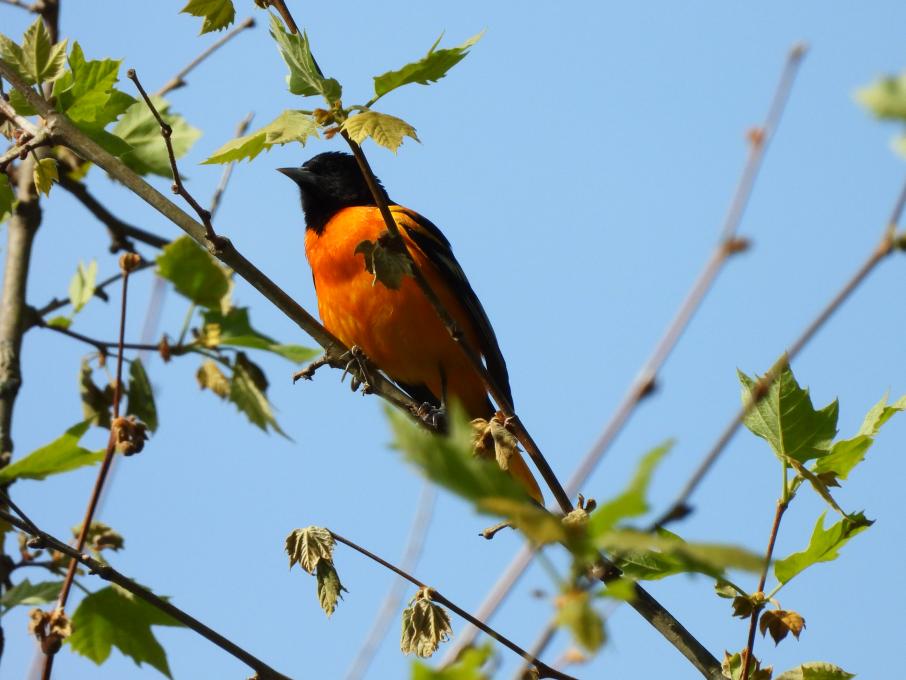
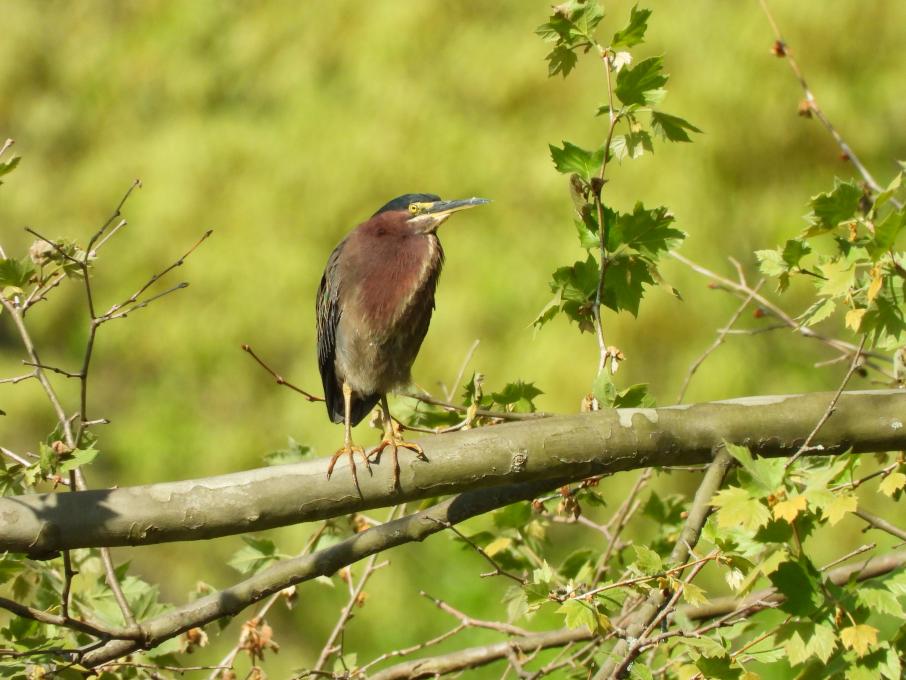
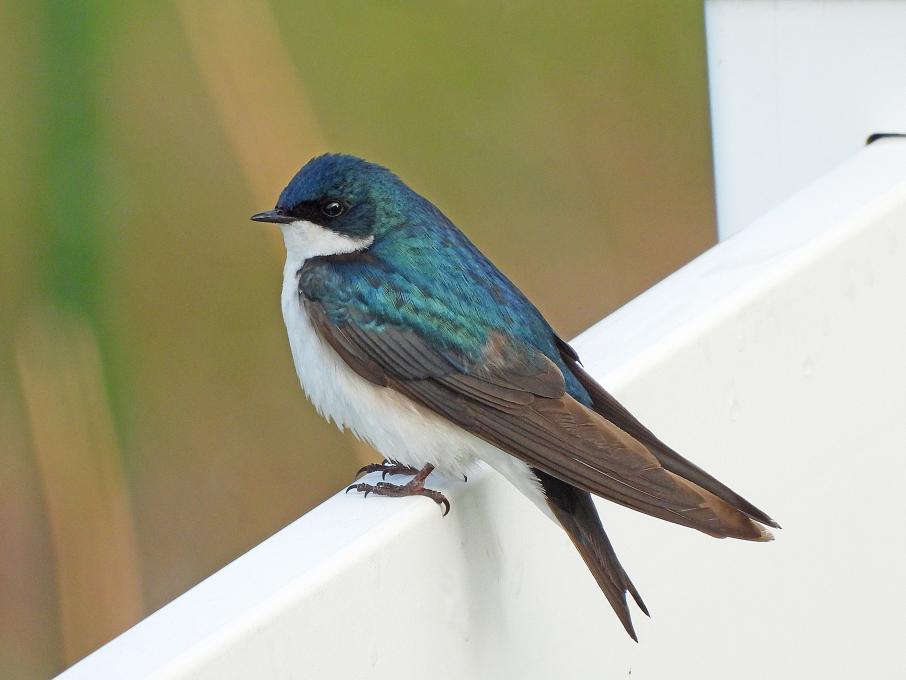

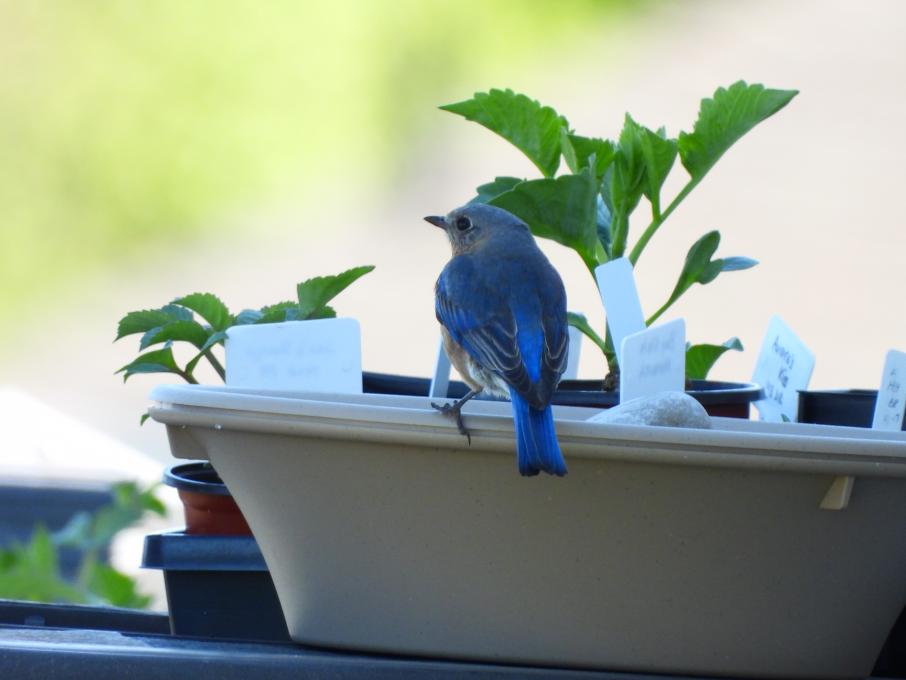
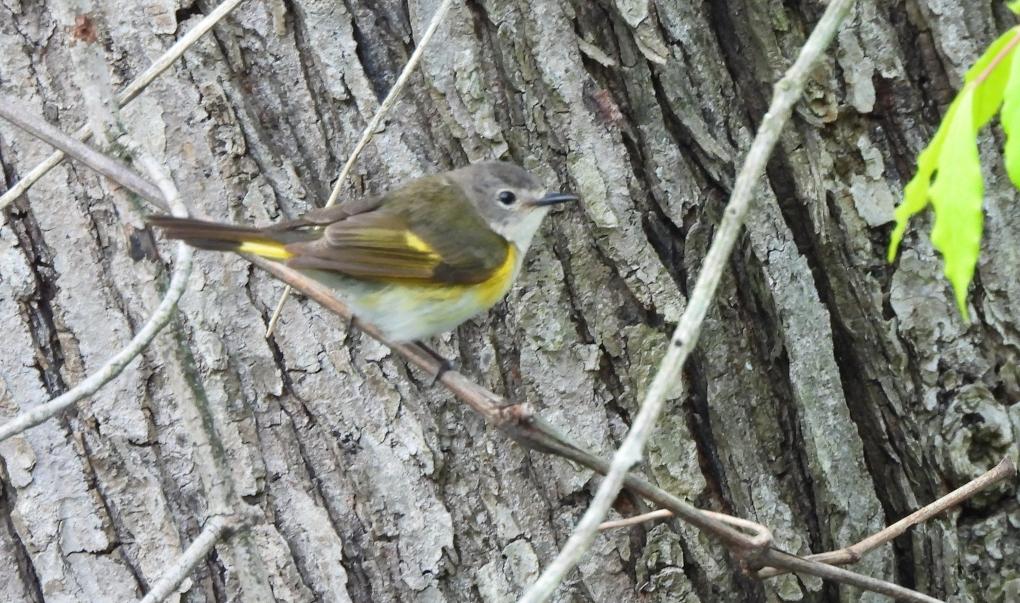
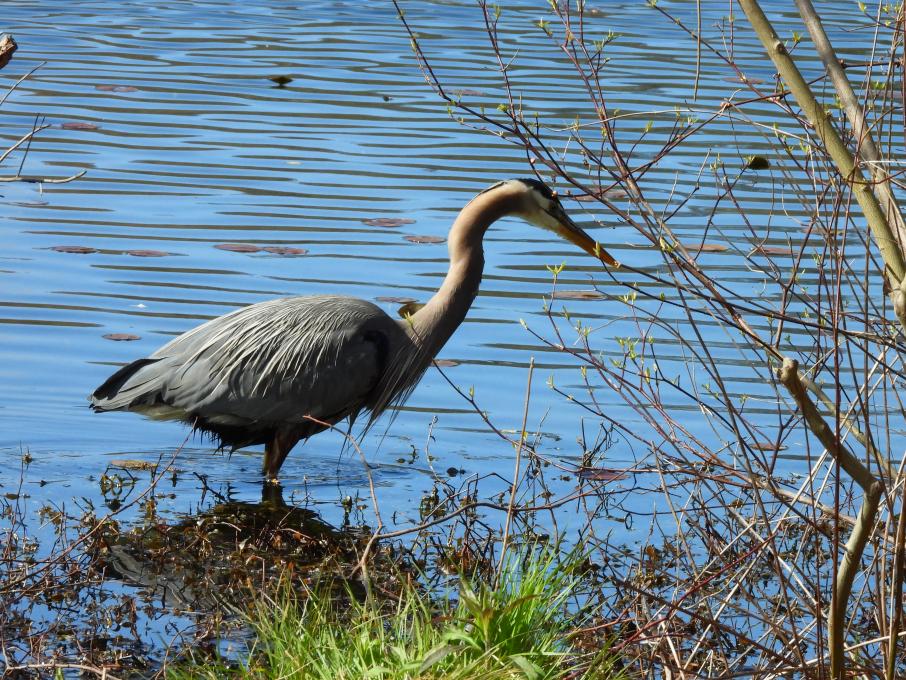 Great Blue Heron
Great Blue Heron 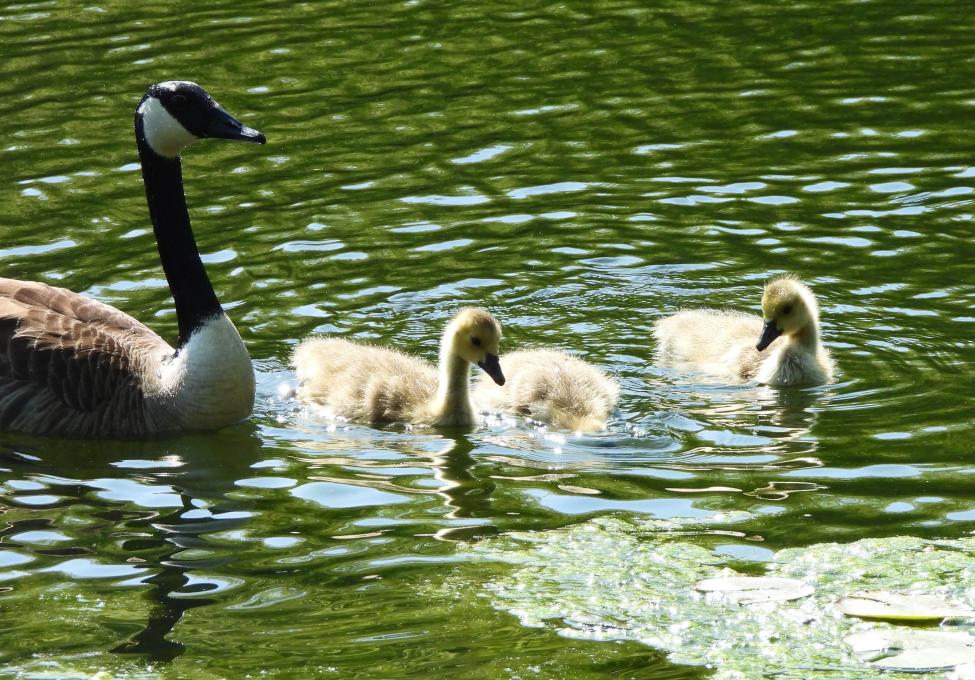
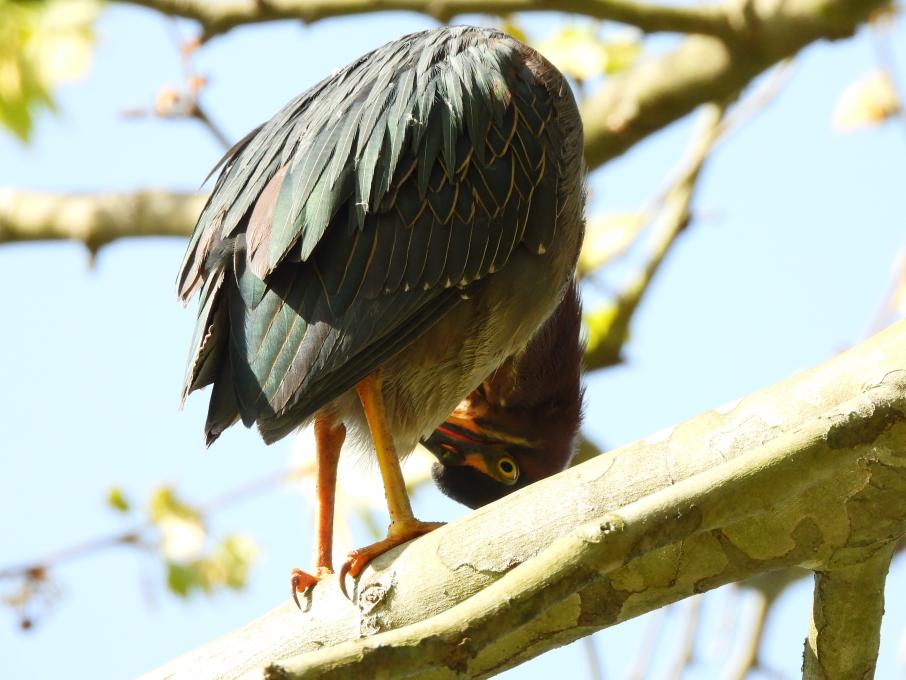

 Birds really do have unique ways of eating, what they eat and how they approach food. The red-bellied woodpecker in my yard tends to come in for one piece of food and then fly a short distance to the nearest tree. He will repeat this numerous times. On occasion he will stay for a second bite- it usually depends on if it is seed or suet. I have also seen him take nuts and find hiding places for them. The woody and hairy woodpeckers seem to be more comfortable spending more time at the feeder. Working to get more a meal or multiple bites in one visit. I love watching the doves feed. They will come to me deck when I sprinkle seed and spend some time in one area while they feed as long as they are not disturbed. They also seem willing to have others (birds) around when they are eating. The starlings seem to drive lots of other birds away because they are very dramatic (chaotic). They flap their wings a great deal and "yell" at one another. They seem to give each other a hard time at the feeders and rarely let another near.
3. I am slowly starting to be able to recognize a few different birds by their songs or calls. I am amazed at how many different sounds some of them have. I imagine they mean different things to those who know them. I heard a gray catbird up close for the first time and it really did sound like a meow. However, later in the day I heard a different one and it sounded very different. I have a long way to go.
Birds really do have unique ways of eating, what they eat and how they approach food. The red-bellied woodpecker in my yard tends to come in for one piece of food and then fly a short distance to the nearest tree. He will repeat this numerous times. On occasion he will stay for a second bite- it usually depends on if it is seed or suet. I have also seen him take nuts and find hiding places for them. The woody and hairy woodpeckers seem to be more comfortable spending more time at the feeder. Working to get more a meal or multiple bites in one visit. I love watching the doves feed. They will come to me deck when I sprinkle seed and spend some time in one area while they feed as long as they are not disturbed. They also seem willing to have others (birds) around when they are eating. The starlings seem to drive lots of other birds away because they are very dramatic (chaotic). They flap their wings a great deal and "yell" at one another. They seem to give each other a hard time at the feeders and rarely let another near.
3. I am slowly starting to be able to recognize a few different birds by their songs or calls. I am amazed at how many different sounds some of them have. I imagine they mean different things to those who know them. I heard a gray catbird up close for the first time and it really did sound like a meow. However, later in the day I heard a different one and it sounded very different. I have a long way to go. 